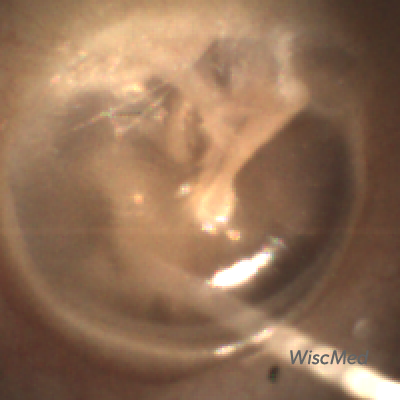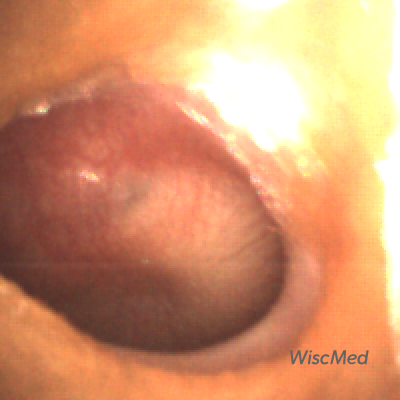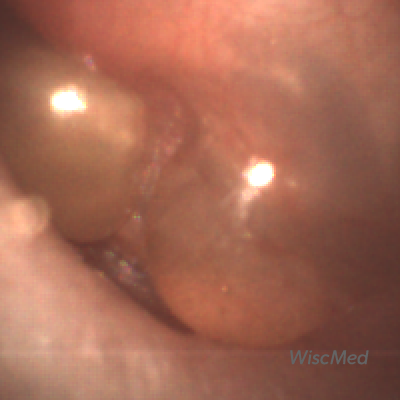
Bullous Myringitis
A 5-year-old male presents to the pediatric clinic with ear pain. The child recently started attending school and his father reports that several classmates have been diagnosed with a respiratory syncytial virus (RSV). Three days ago the child developed a cough, fever, runny nose, and congestion. The parents treated the symptoms with over-the-counter medications. Yesterday, the child developed ear pain. He continues to eat and drink and be active, although with less enthusiasm than is normal for him. The following image was obtained. What is your diagnosis?
The child has bullous myringitis.
This is a common clinical scenario. A pediatric patient with viral symptoms and then developing ear pain. Bullous myringitis is an infection of the middle ear, like acute otitis media, but distinguished by blistering on the tympanic membrane (eardrum).

With acute otitis media, the pressure inside the middle ear space from infection/inflammation causes the entire tympanic membrane to be “evenly” bulging. With bullous myringitis, bulging from the middle ear space is also present, but in addition, there are discrete blisters as seen here.
Compare the three examples below of a normal ear, an ear with acute otitis media, and an ear with bullous myringitis.
- Normal ear
- acute otitis media
- bullous myringitis
Treatment is focused on providing pain relief along with treating the underlying infection. An anesthetic such as topical lidocaine can be introduced in the ear canal to provide timely pain relief. Treatment of the underlying infection is the same as for acute otitis media.
Historically, bullous meningitis was thought to be caused by Mycoplasma pneumoniae. However, as Mellick(1) documents in his letter, it is a component of severe AOM whose underlying cause may be a number of infectious agents.
(1) Mellick and Verma, Letter, Pediatric Emergency Care, Volume 26, Number 12, December 2010










































































































































































































